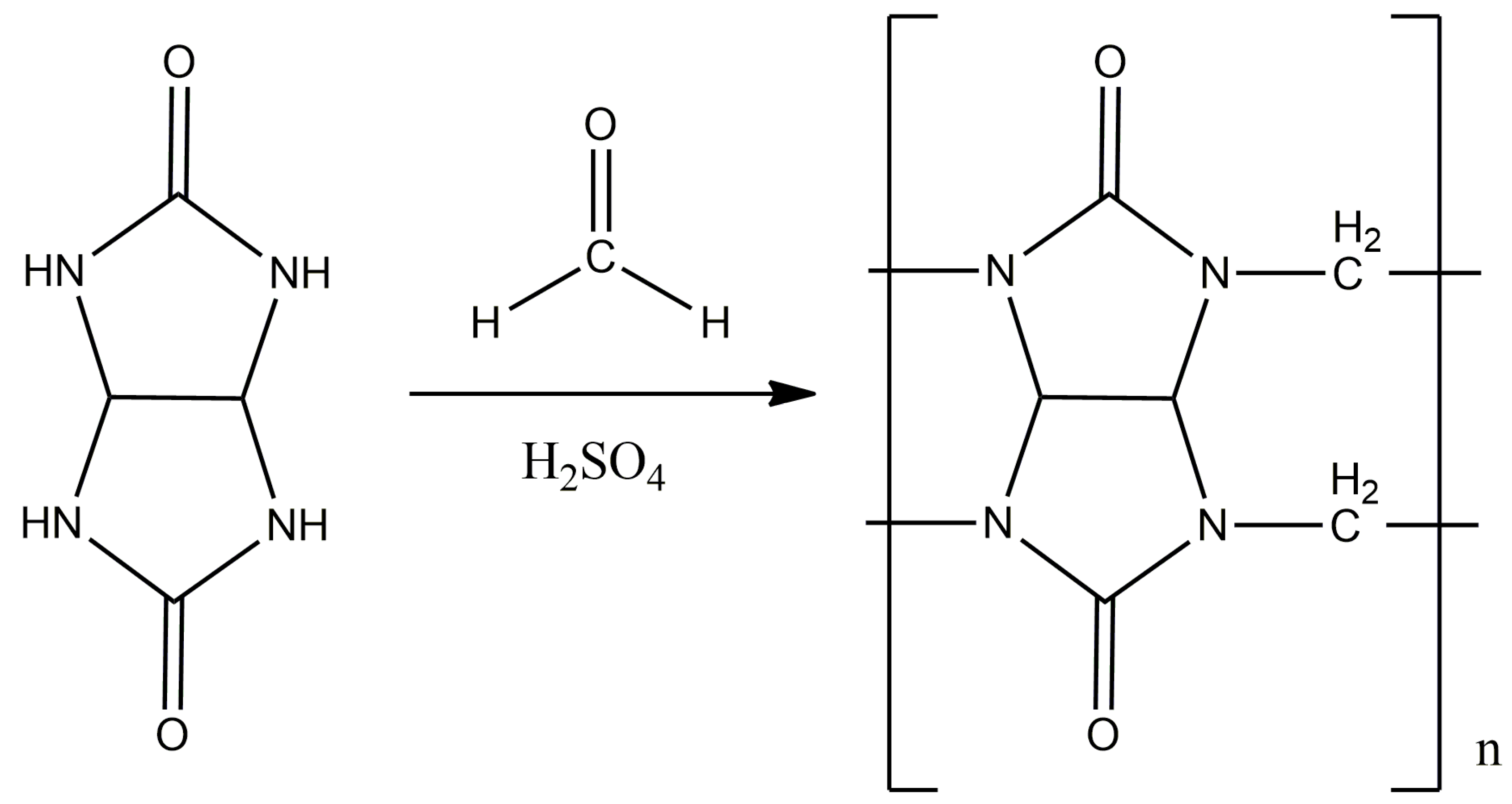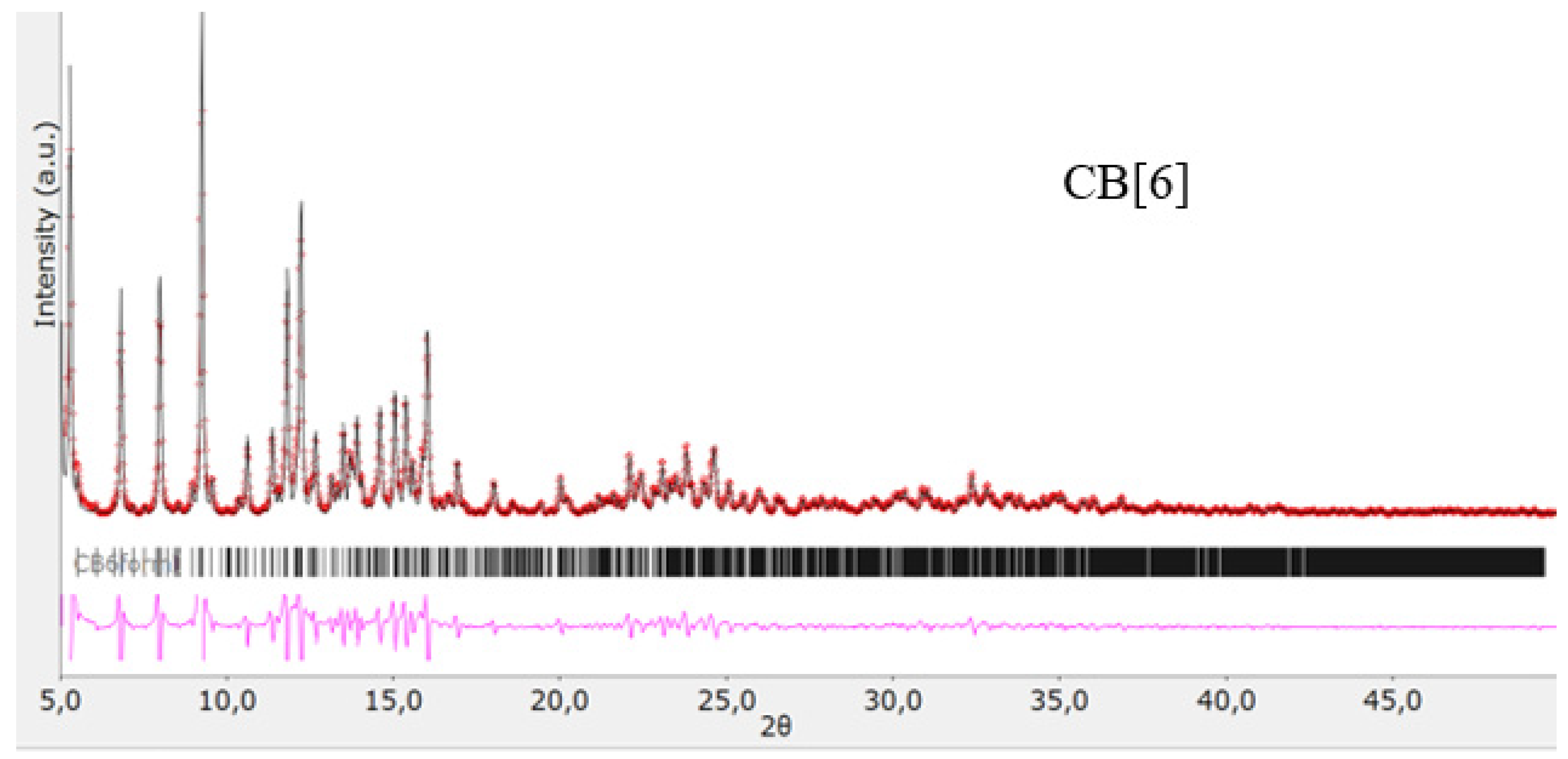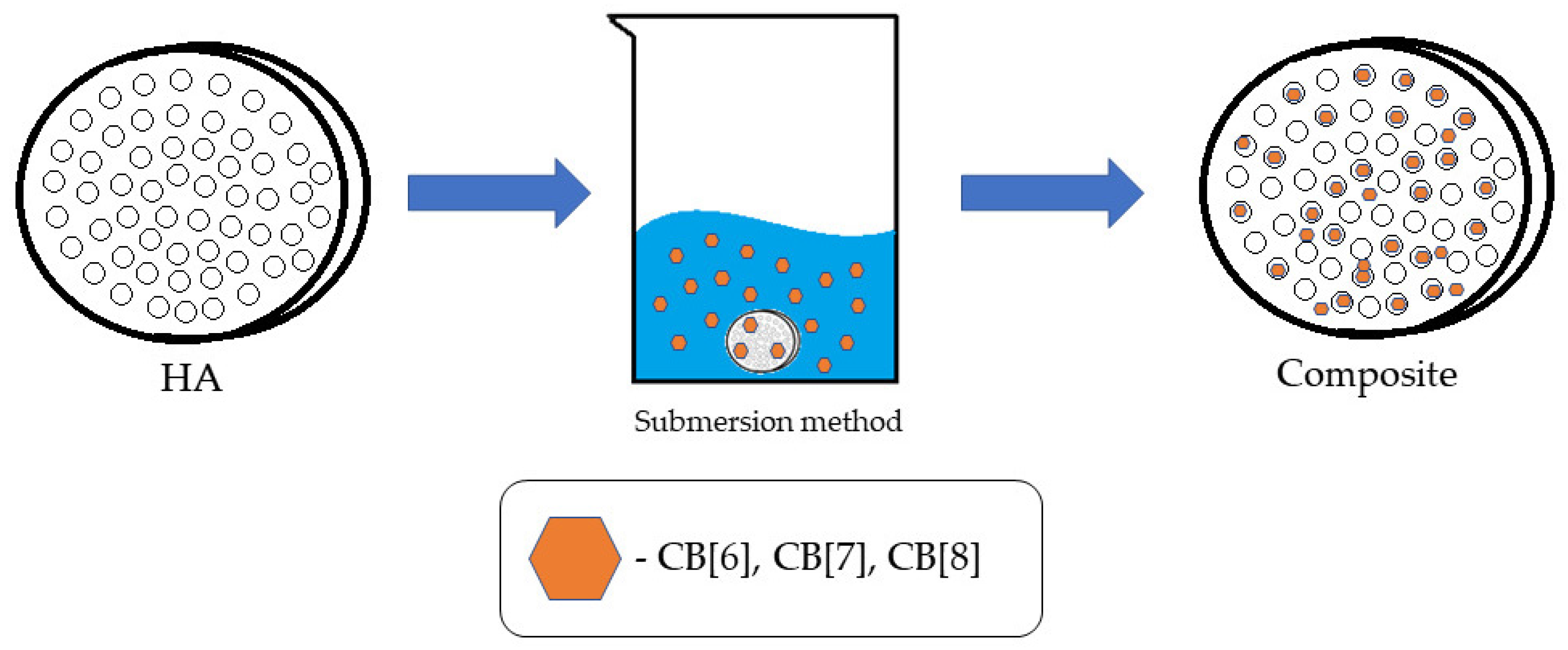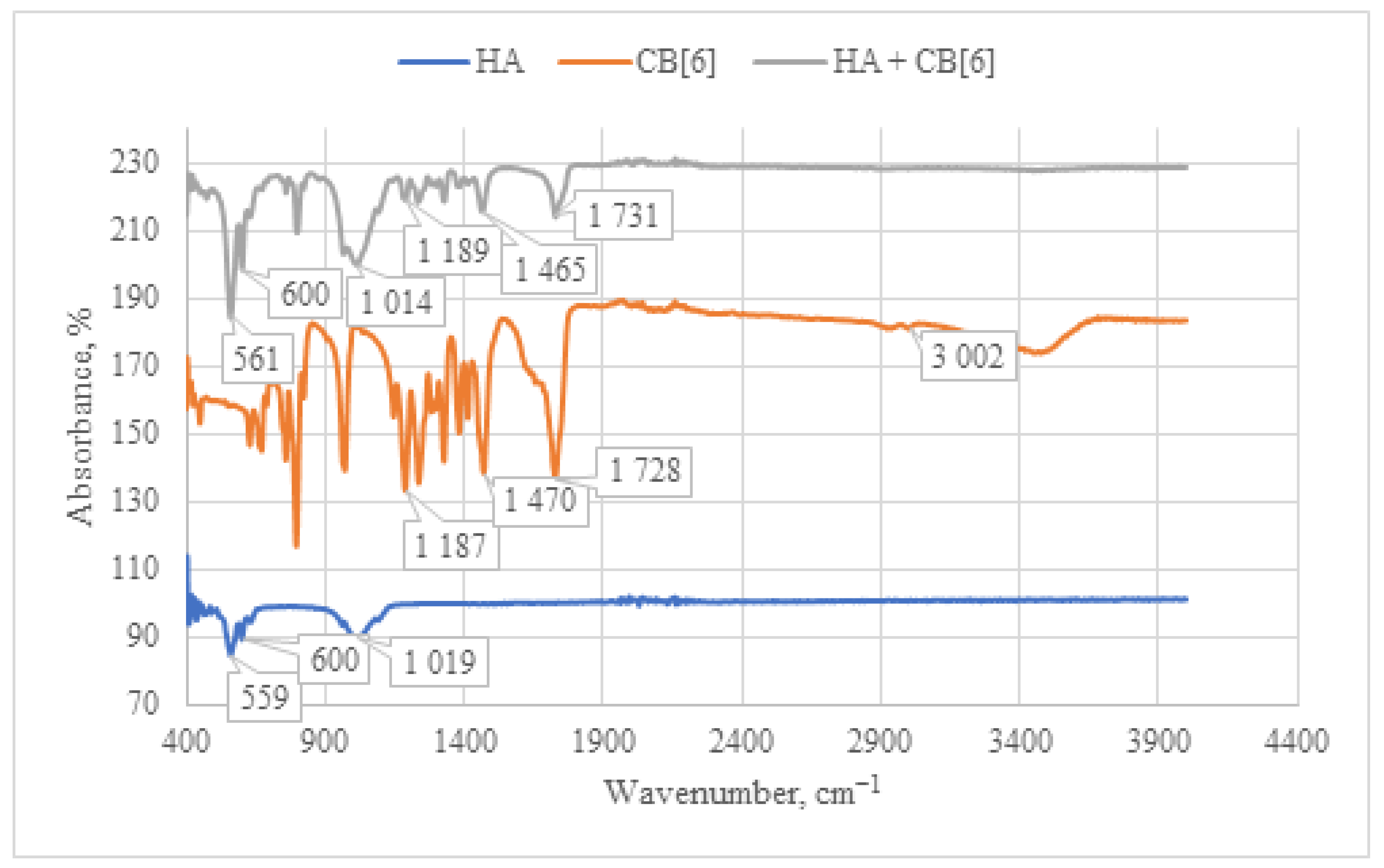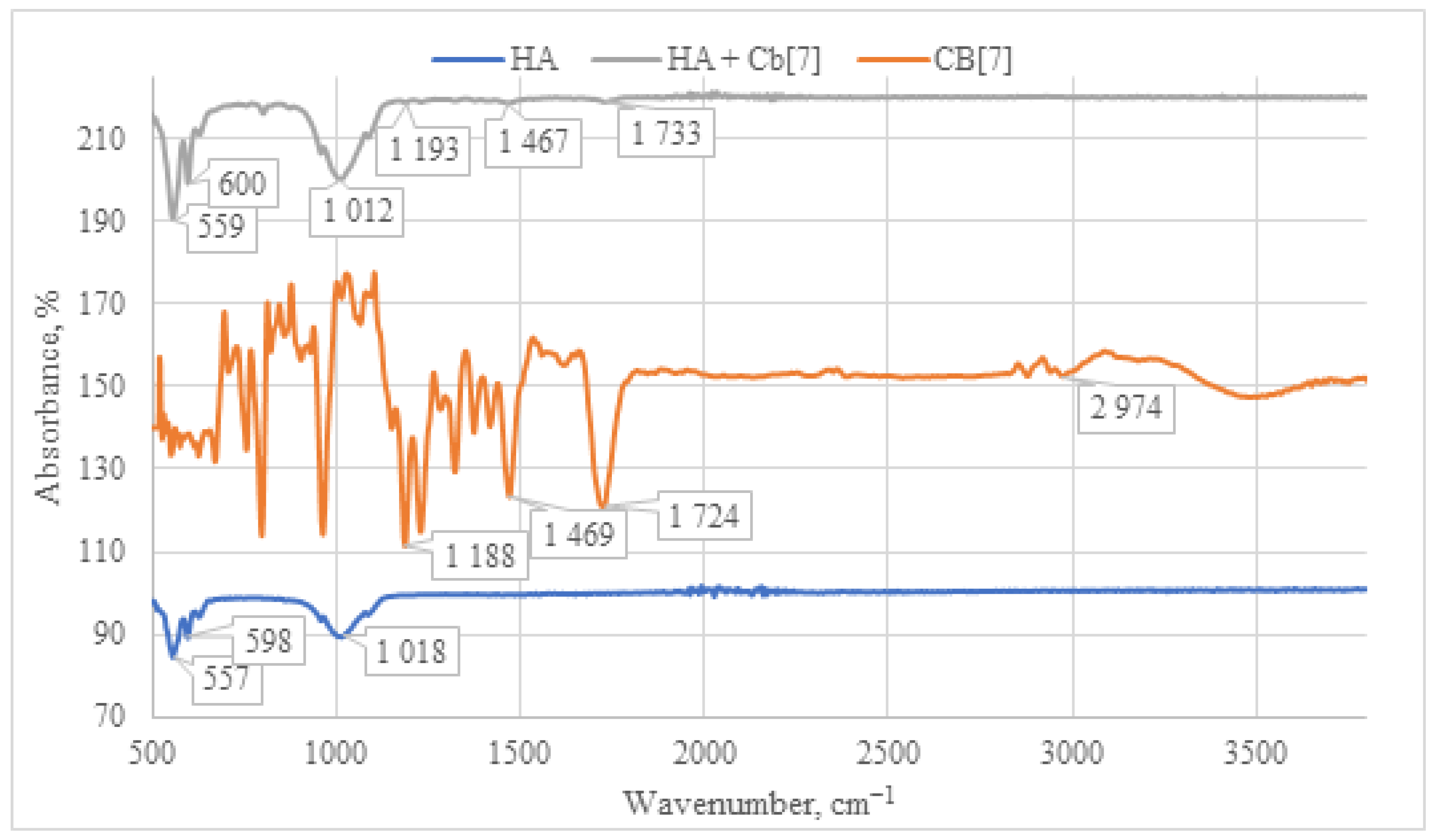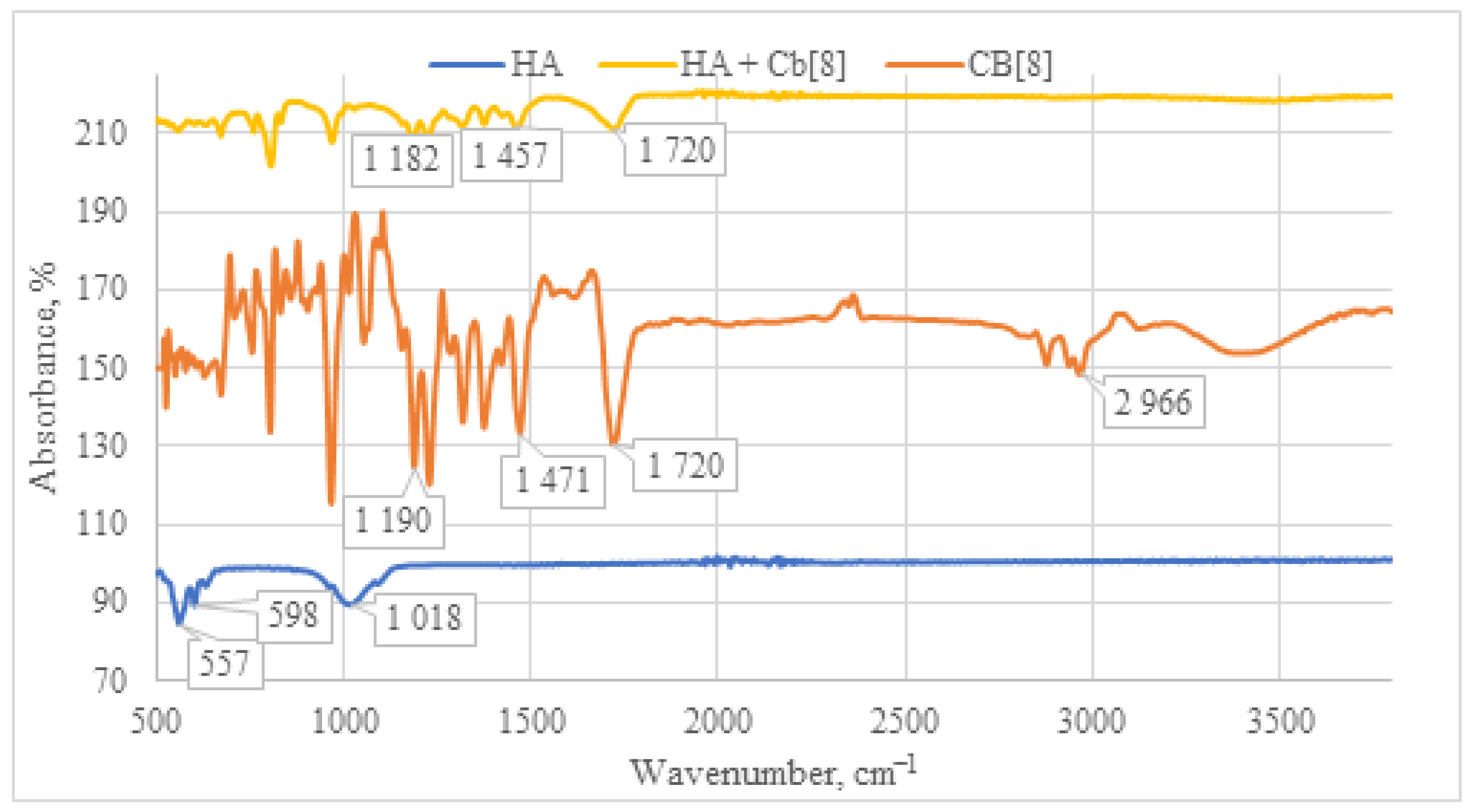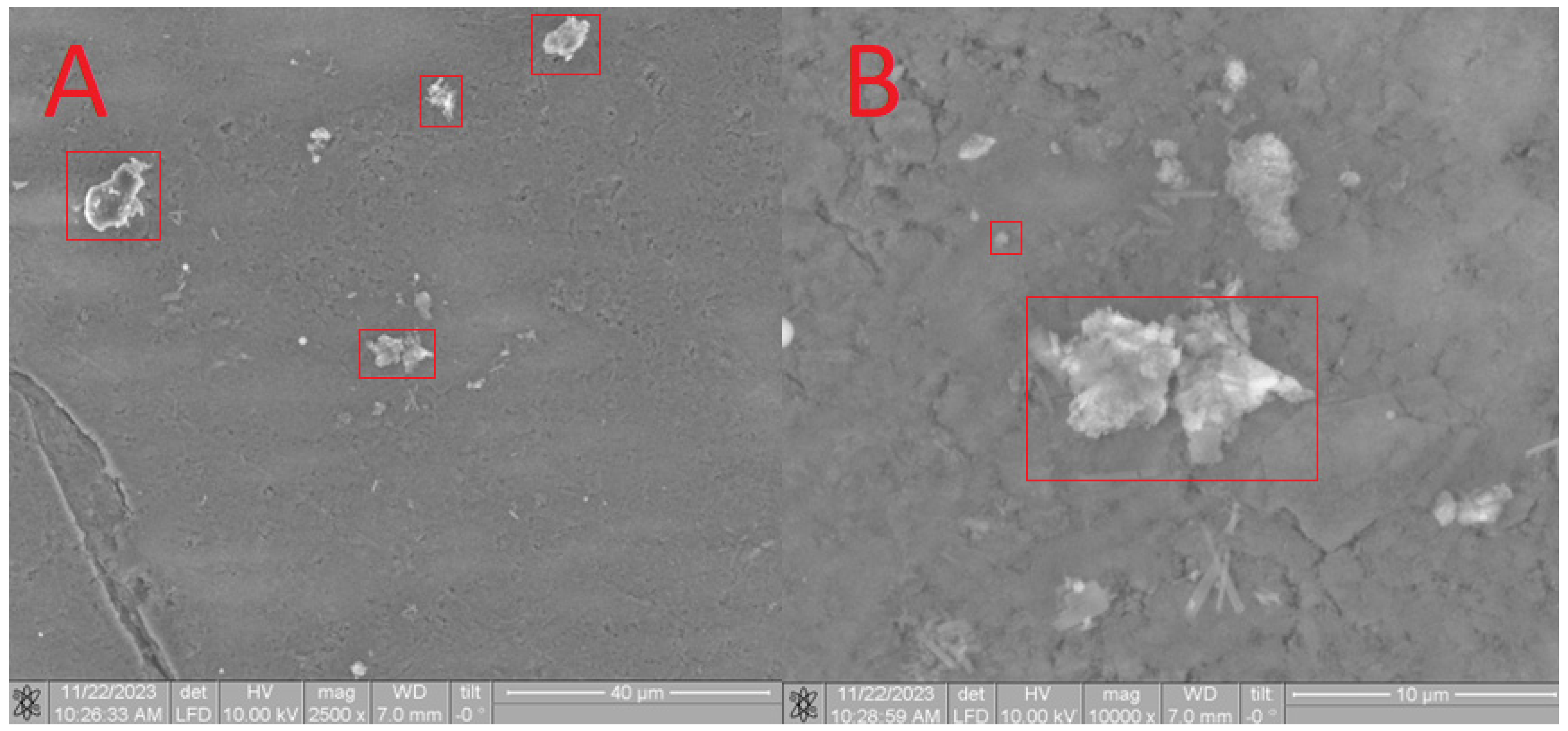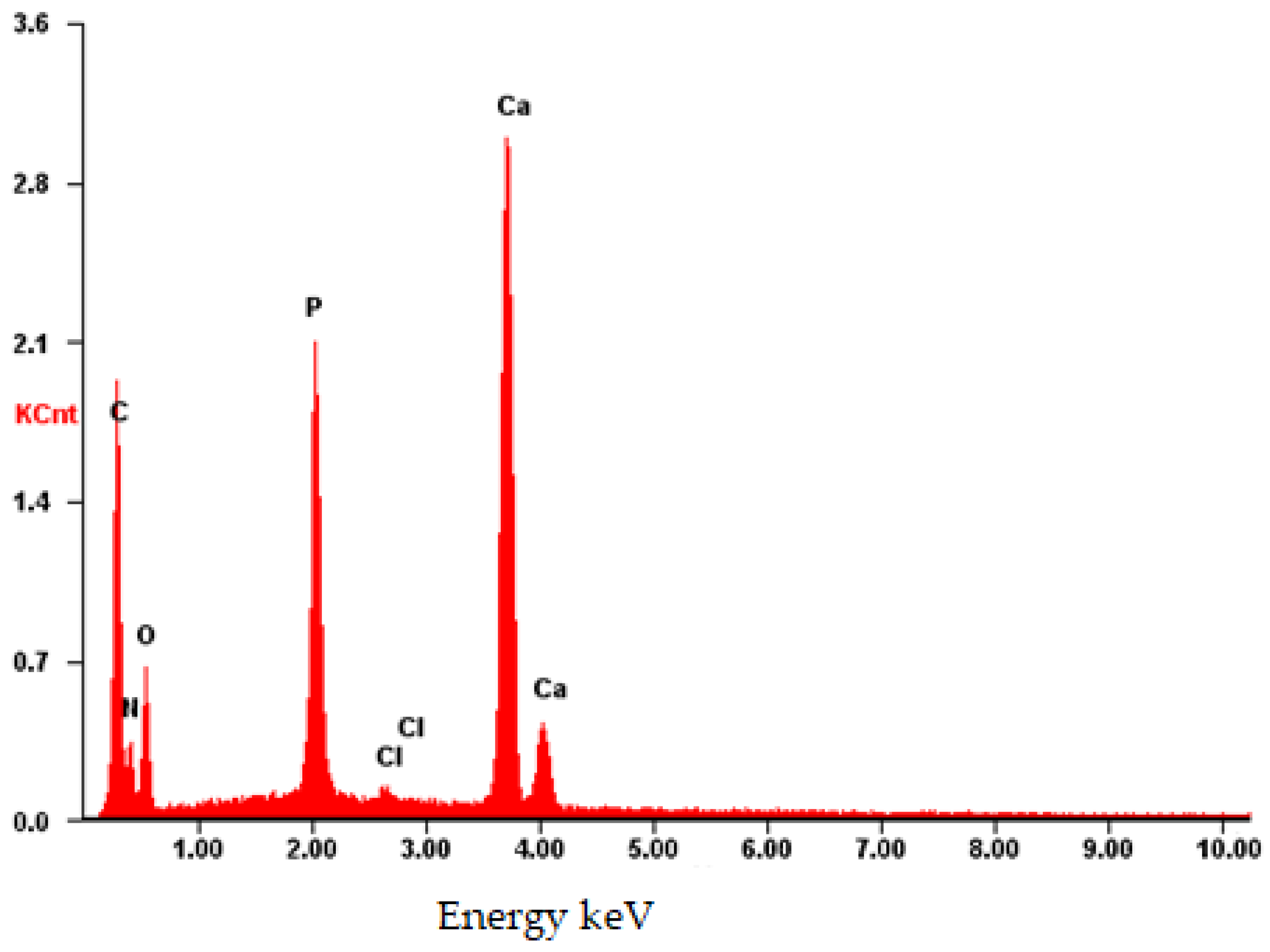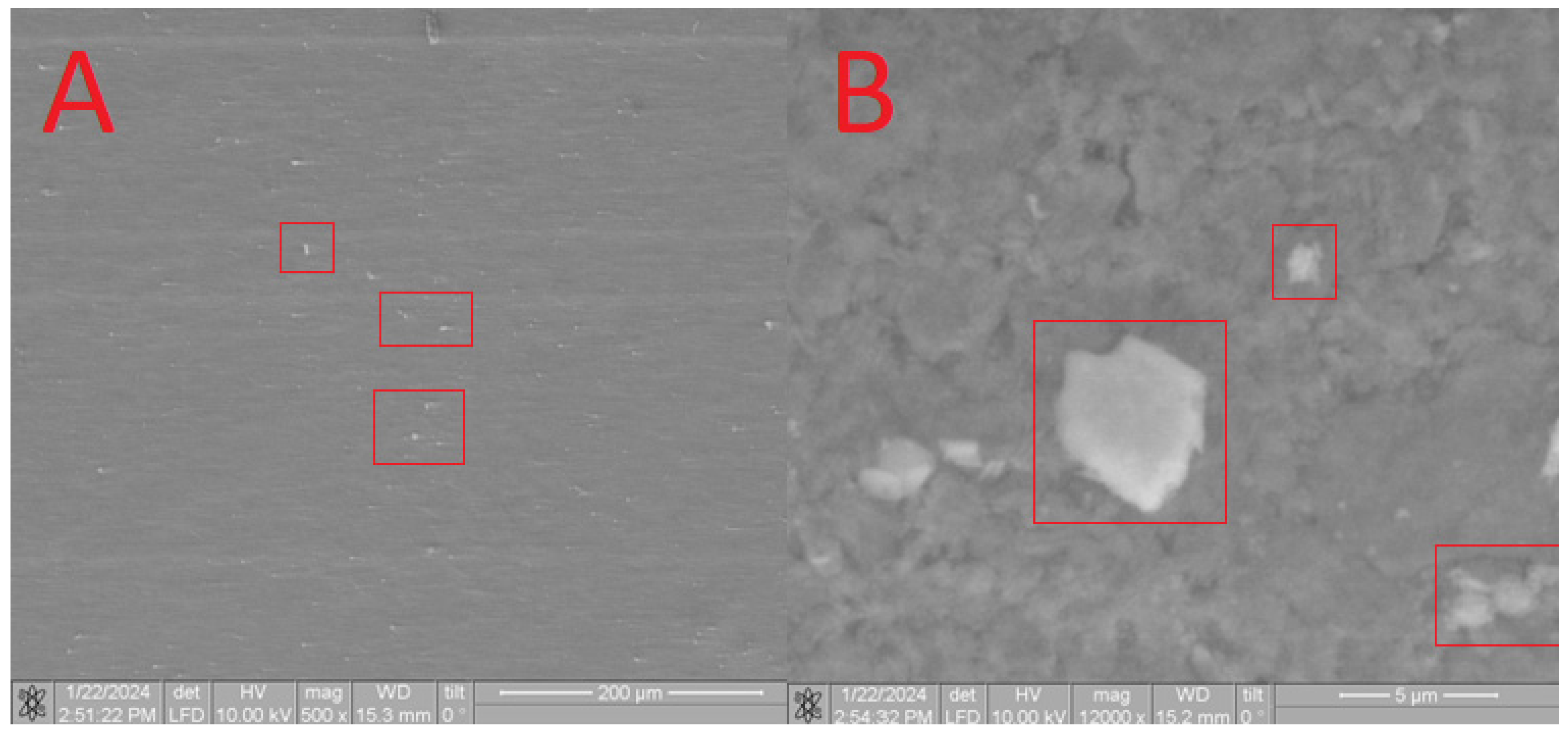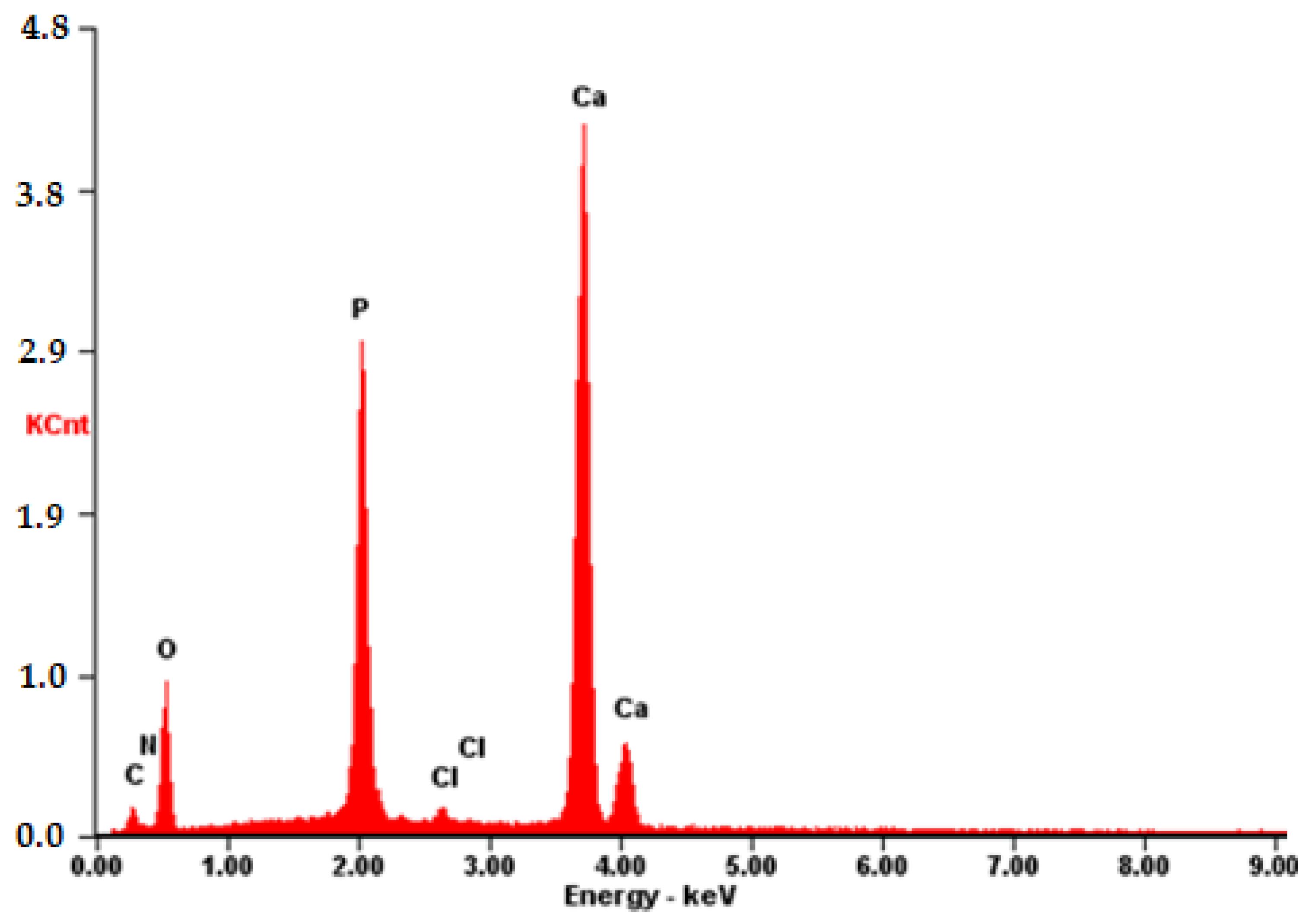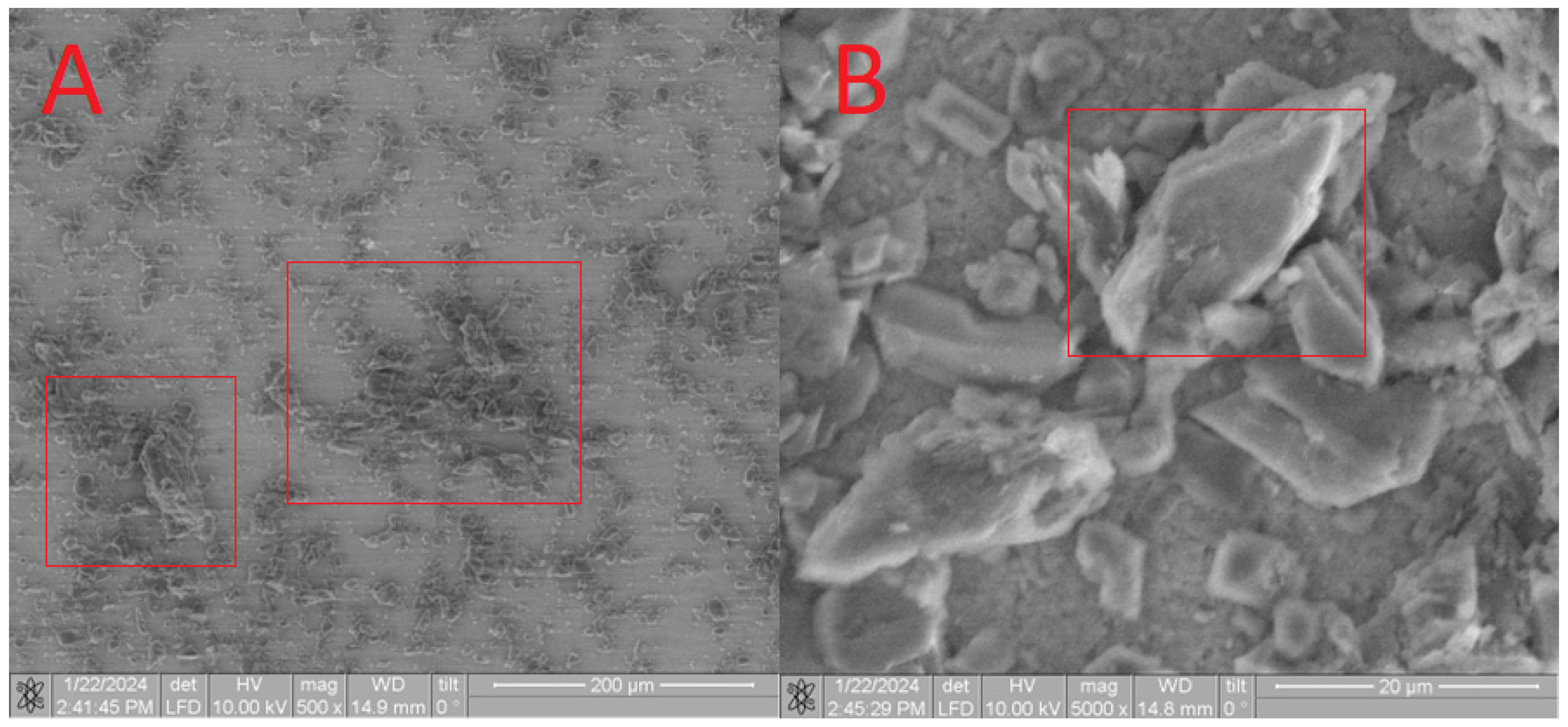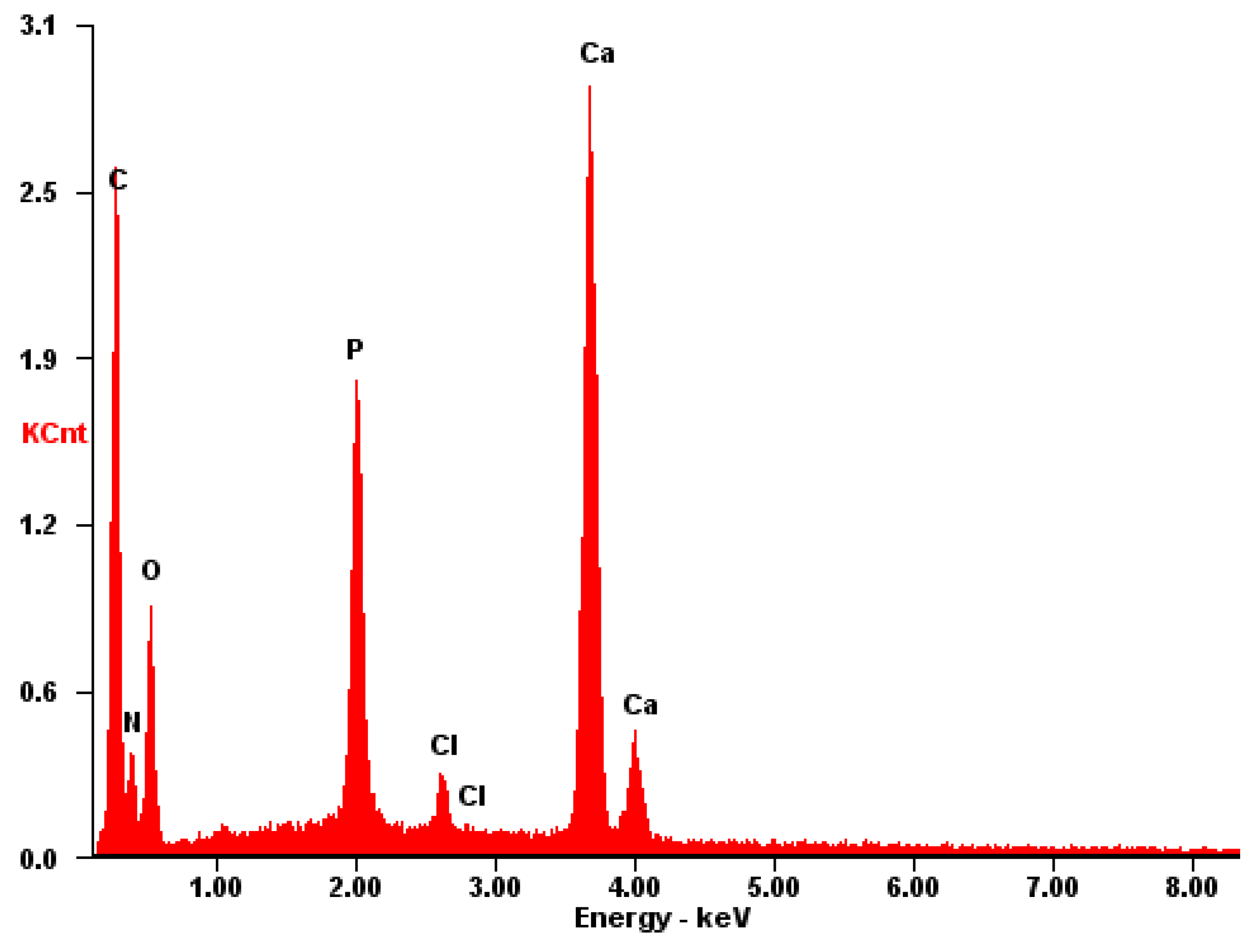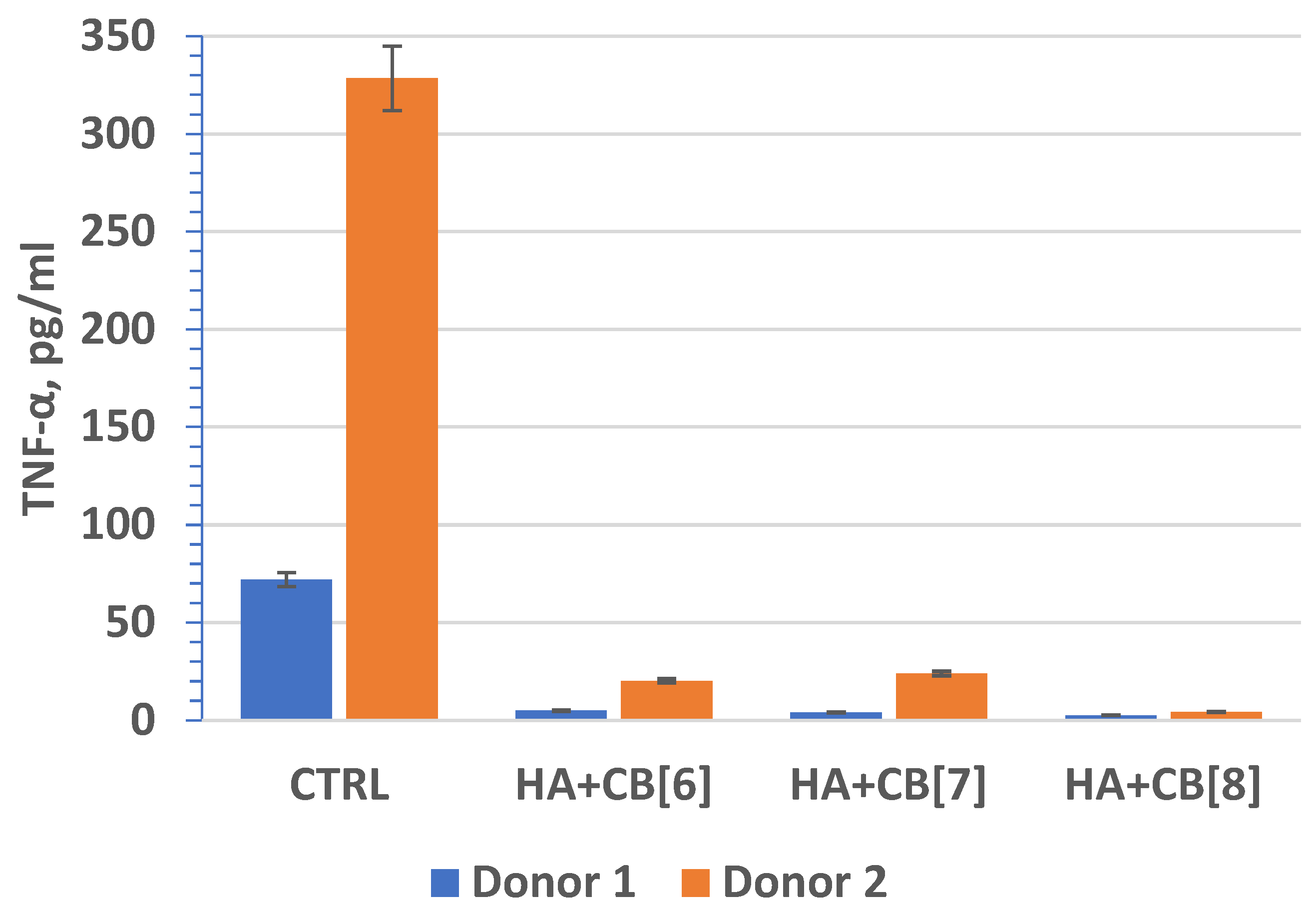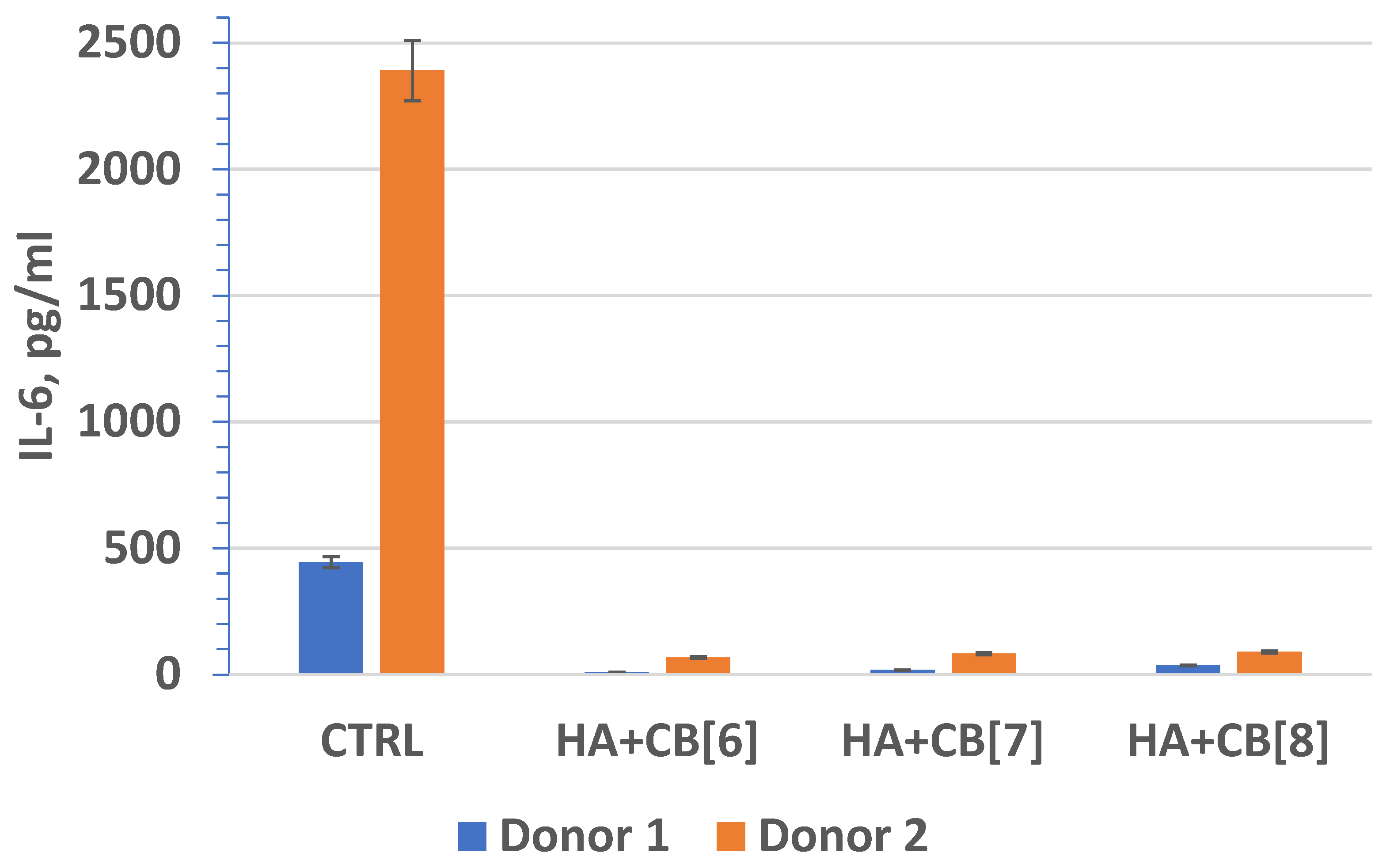1. Introduction
In the contemporary era of personalized medicine, there exists a pressing demand for the development of novel materials tailored for implants, each mandated to possess specific characteristics. To ensure their efficacy in medical applications, such materials necessitate an optimal blend of diverse properties [
1]. As the demand for precise and tailored treatments increases, ongoing research focuses on enhancing traditional biomaterials for established applications while also seeking new bioactive materials suitable for diverse advanced applications, such as regenerative medicine and addressing various health issues, including theranostic biomaterials (offering diagnostic, monitoring, and combined therapeutic capabilities). In contemporary medical practice, biomaterials play a significant role, serving to stimulate healing and facilitate the restoration of initial biological or functional activity. These biomaterials may be derived from natural sources or synthetically produced [
2].
The fundamental attributes of these materials encompass their composition, shape, structure, and mechanical properties. Biocompatibility emerges as a critical facet, denoting the capacity to interface with surrounding tissues without provoking adverse reactions or inflammation. Moreover, it is advantageous for such materials to promote the proliferation of blood vessels or bones in their vicinity, thereby facilitating the healing and regeneration of impaired tissues. Whether employed in implants or wound treatment, these properties delineate the material’s capability to interface with adjacent tissues. Bioactive materials hold the potential to serve as a scaffold for tissue regeneration, hastening the repair of damage [
1].
Conversely, materials in direct contact with the body’s internal environment ought to exhibit minimal toxicity towards cells and tissues. Nevertheless, numerous substances boasting potent antibacterial attributes often carry significant toxicity, thereby compromising their biocompatibility. This underscores the intricate nature of the interaction between biomaterials and host tissues, representing a paramount challenge in biomaterials research [
3]. Biocompatibility refers to the immune rejection or inflammatory response of the surrounding tissue systems triggered by the presence of a foreign body within the body [
3].
In adherence to the rigorous clinical standards governing medical device deployment, a meticulous surface modification protocol stands as an imperative prerequisite prior to implantation within the human body, aiming to bolster biocompatibility. Consequently, the quest for materials exhibiting dual characteristics of biocompatibility and specific biological functionality presents a formidable scientific endeavor [
4].
Moreover, modern clinical therapeutic strategies hinge upon the administration of drugs via oral ingestion or intravenous infusion, facilitating rapid elevation of drug concentration in the bloodstream following dosage administration. However, this concentration swiftly diminishes below the therapeutic threshold. Consequently, there is a risk of the drug level spiking to toxic levels post-administration, followed by a drop below the therapeutic range, rendering the therapy ineffective [
4].
The advent of drug-releasing implants presents a compelling departure from traditional routes of drug delivery, such as oral ingestion and intravenous infusion, offering an array of promising applications across diverse clinical treatments. Key materials currently under exploration for the fabrication of such implants include titanium nanotubes, porous silicon, polymers, hydrogels, and microtechnologies [
5].
Drug-releasing implants hold immense potential for enabling sustained, remotely controlled, programmable, and localized drug release at specific sites within the body. This capability not only enhances therapeutic effectiveness but also minimizes adverse effects experienced by patients. These attributes significantly surpass the capabilities of conventional systemic drug administration methods, marking a significant stride in the field of therapeutic interventions [
5].
Bioactive materials hold a unique position among implants due to their capacity to promote the growth of new tissue in their vicinity. This capability facilitates enhanced healing and recovery processes, making them particularly crucial for medical applications pertaining to wound and injury treatment [
6].
All these attributes of implant materials play a vital role in their application in medical practice. Ongoing research and development in this domain is continually advancing, aiming to identify the most suitable materials that fulfill all prerequisites and deliver optimal outcomes for patients [
6].
There exists a necessity to devise materials that engage with the body’s internal environment while imposing minimal toxicity on cells and tissues. Nonetheless, numerous substances endowed with antibacterial properties can exert significant toxicity on living tissues. Consequently, a dilemma frequently arises: heightened antibacterial efficacy coincides with diminished biocompatibility. This complicates the challenge of crafting materials possessing both antibacterial attributes and robust biocompatibility [
6].
One potentially promising material is modified hydroxyapatite (HA) augmented with biologically active compounds. Hydroxyapatite constitutes a pivotal component of bones (comprising roughly 50% of total weight) and teeth (constituting 96% of enamel) and can exist in both synthetic and natural forms.
In the medical realm, synthetic hydroxyapatite (
HA) serves multifaceted roles, including as a filler for the restoration of bone defects and as a coating on implants to facilitate the regeneration of new bone tissue [
7]. Additionally,
HA finds application as a constituent in biocomposites and as coatings for surgical implants. Notably, these materials exhibit inertness towards living tissues and demonstrate low toxicity levels [
7].
Furthermore, the utilization of synthetic hydroxyapatites is associated with a minimal risk of eliciting allergic reactions, inflammation, or mutagenic effects. Modified forms of hydroxyapatites have been demonstrated to expedite the process of reparative osteogenesis at the implantation site while concurrently augmenting osteoblast proliferation. These attributes collectively underscore the pivotal role of synthetic hydroxyapatites in advancing regenerative medicine and orthopedic surgery [
8].
To date, techniques for the surface modification of porous materials through saturation with biologically active compounds, such as macrocyclic compounds, are gaining prominence. These methods afford the ability to regulate the release of antibiotics, drugs, biologically active substances, and cells [
9].
Macrocyclic compounds are frequently favored over alternative drug delivery systems, like dendrimers, liposomes, micelles, carbon nanotubes, hydrogels, and polymers. This preference stems from several advantages that they offer [
10,
11,
12]. Macrocyclic compounds typically exhibit enhanced stability and enable a controlled rate of drug release [
10,
11,
12]. The development of efficient drug and biologically active substance delivery systems represents a significant stride in advancing novel approaches in medicine and various other domains of science and technology [
10,
11,
12].
Macrocyclic systems derived from glycoluril and its derivatives, such as cucurbit[n]urils and bambusurils, serve as ideal starting reagents for surface modification of porous materials. In contrast to cucurbit[n]urils (
CB[n]), bambus[6]uril (
BU[6]) exhibits a relatively weaker affinity for hydrogen bonding with anions situated within its hydrophobic cavity [
13]. The positively charged electrostatic domain of
BU[6] facilitates the attraction of anions, while the portal carbonyl oxygen atoms generate a negative region capable of interacting with positively charged particles. Our investigations focused on evaluating the hemocompatibility and the capacity for human plasma protein adsorption of materials incorporating
BU[6] and hydroxyapatite [
14].
Modification of
BU[6] samples resulted in a reduction in protein adsorption, thereby enhancing their hemocompatibility. This phenomenon is likely attributed to alterations in the surface properties of the material induced during
BU[6] modification, including changes in surface tension, free surface energy, roughness, and hydrophilicity. Deposition of
BU[6] onto the surface of porous materials is speculated to induce modifications in surface charge, mimicking characteristics akin to blood [
14]. Consequently, the diminished plasma protein adsorption mitigates thrombogenicity, thereby augmenting hemocompatibility [
14].
In contrast to
BU[6],
CB[n] showcases a distinct capacity for forming host–guest complexes with cationic molecules and boasts a broader spectrum of molecular cavity sizes [
15].
CB[n] displays an inherent ability to selectively accommodate diverse organic guest molecules through a repertoire of interaction mechanisms including hydrophobic interactions, hydrogen bonding, Van der Waals forces, π-π stacking, and ion–dipole effects, culminating in the formation of inclusion complexes [
16,
17].
The utilization of
CB[n]’s hydrophobic cavity in assembling biologically active functional molecules has garnered considerable attention among researchers. This interest extends beyond its role as a targeted drug delivery system to encompass applications in disease diagnosis and various other domains [
18,
19]. Unlike many other macrocyclic hosts,
CB[n] exhibits an exceptionally rigid structure, rendering the determination of cavity parameters particularly elucidative. For instance, all
CB[n] variants (n = 5–8 and 10) share a uniform height (d = 9.1 Å) while manifesting significant discrepancies in cavity width.
CB[5] has an inner diameter of 4.4 Å, while
CB[8] has twice that size at 8.8 Å [
20,
21]. This characteristic enables the accommodation of drug molecules of varying sizes within the
CB[n] cavity, thereby expanding its potential applications across various fields. Presently, antitumor, antibacterial, anticholinergic drugs, antioxidants, neurotransmitters, cholinesterase reactivators, and other compounds are being encapsulated within the
CB[n] cavity [
22]. Leveraging these properties enables researchers to impart various necessary characteristics into materials. Currently, techniques for surface modification of porous materials through impregnation with biologically active compounds, including macromolecular entities, are experiencing widespread adoption for various applications [
22]. These methodologies offer meticulous control over the release kinetics of antibiotics, pharmaceutical agents, biologically active substances, and cells, thus presenting versatile avenues for tailored therapeutic interventions and biomedical applications [
9].
In summary, the utilization of nitrogen-containing macrocyclic compounds for the surface modification of porous materials serves two primary objectives: enhancing biocompatibility and enabling the development of medical biomaterials with controlled drug release capabilities. Consequently, CB[n] emerges as unique and intriguing molecules for the fabrication of biocompatible materials with multifaceted applications across various fields. Continued research in this domain holds the potential to further broaden the horizons of their utilization and uncover new breakthroughs.
This study marks the inaugural deposition of a series of cucurbit[n]urils (CB[6], CB[7], and CB[8]) onto the surface of hydroxyapatite (HA). This innovative approach serves as a foundation for saturating the cavities of cucurbit[n]urils with therapeutic agents, thereby imparting therapeutic functionality to hydroxyapatite and facilitating osteogenesis. Accordingly, the primary aim of this investigation is to assess the influence of cucurbit[n]uril precipitation on the structural integrity of hydroxyapatite (HA) and to evaluate the in vitro biocompatibility of the resultant biocomposite materials.
3. Results and Discussion
In this study, we explored the impact of macrocyclic compounds, specifically CB[n], on the biocompatibility of hydroxyapatite (HA), with the aim of developing a matrix for promising biocomposite materials suitable for medical applications. The materials obtained were subjected to thorough characterization using infrared (IR) spectroscopy, scanning electron microscopy (SEM), and energy-dispersive X-ray fluorescence spectroscopy (EDS).
When analyzing the IR spectrum of the
CB[6] + HA composite obtained through immersion (as shown in
Figure 8), characteristic absorption bands of
CB[6] are observed. Specifically, peaks at 1731 cm
−1 are evident, corresponding to the valence vibration of carbonyl groups (C=O) present in the glycoluril linkage of
CB[6]. In the IR spectrum, deformation vibrations of the CH
2 groups are detected in the range of 1200–1500 cm
−1, along with vibrations of the OH groups at 3400–3500 cm
−1. These OH vibrations correspond to both water molecules and hydroxyl groups of
HA. The concurrent presence of these characteristic vibrations confirms the incorporation of
CB[6] into the composition of the
HA + CB[6] composite.
The IR spectrum of the
HA + CB[7] sample exhibits a similar pattern to that of
HA + CB[6] (as depicted in
Figure 9), albeit with significantly lower signal intensity. This reduced intensity can be attributed to the high solubility of
CB[7] in water. Consequently, the lower quantity of
CB[7] on the surface leads to diminished signal intensity in the IR spectrum. This observation is further supported by SEM and EDS analyses, as depicted in Figures 12 and 13, which confirm the lower presence of
CB[7] on the surface compared to
CB[6]. Moreover, a notable shift of the carbonyl group C=O signal is observed in the
HA + CB[7] sample, amounting to 7 cm
−1 towards the long-wavelength region. In contrast, the shift observed in
HA + CB[6] (as depicted in
Figure 8) is only 3 cm
−1. This discrepancy suggests a subtle interaction between
CB[7] and the
HA surface.
Upon examination of the IR spectrum of the
HA + CB[8] sample (
Figure 10), a pattern analogous to
HA + CB[6] is observed. All characteristic absorption bands for
CB[8] are present, including the C=O signal at 1720 cm
−1, along with deformation vibrations of CH
2 groups within the 1200–1500 cm
−1 range. Taken together, these observations affirm the presence of
CB[8] in each of the samples.
Furthermore, SEM analysis was conducted to characterize the obtained composites. On the surface of the
HA in the
CB[6] + HA sample, distinct
CB[6] particles are prominently observed (
Figure 11A), ranging in size from 10 microns to 700 nm. These
CB[6] particles are highlighted within the red square in the image.
Upon closer scrutiny, ensembles of
CB[6] molecules are distinctly observed (
Figure 11B), aligning with the dimensions of the pores. These ensembles exhibit diameters reaching up to 700 nm, as indicated by the red square in the image. The formation of such ensembles can be attributed to the propensity of
CB[6] to form dispersed solutions in water. The diameter of certain
CB[6] particles (highlighted by the red square) exceeds the pore size of the hydroxyapatite (
HA) carrier, leading to overlapping pores where the
CB[6] macrocycles remain on the surface. This uneven distribution across the surface arises from the partial solubility of
CB[6], causing some particles to penetrate into the surface. This penetration is confirmed by infrared spectroscopy of the scaffold chip.
The composition was further validated using energy-dispersive X-ray fluorescence spectroscopy (EDS). As illustrated in
Figure 12, aside from the predominant elements of hydroxyapatite (P and O), the presence of N and C atoms is evident. This observation confirms that the substance on the surface possesses an organic nature and is distinct from the carrier material.
Upon analysis of the
CB[7] + HA sample (
Figure 13), a distinct pattern is observed, which correlates with the complete dissolution of
CB[7] in water. Consequently, during drying, only small particles ranging from 100 to 500 microns were formed on the surface. The presence of
CB[7] is further evidenced by the observed increase in biocompatibility (as depicted in Figures 17–20). In its dissolved state,
CB[7] can penetrate more effectively into the material, facilitating slower release from the material’s pores and, therefore, prolonging its action.
The EDS spectrum exhibits robust signals corresponding to Ca, P, and O, consistent with the predominant elements of hydroxyapatite. Despite the dominance of these elements, the spectrum also detects the presence of N and C atoms, although their signals may be less prominent due to overlapping with the signals from Ca, P, and O. Nonetheless, the detection of N and C atoms confirms their presence on the surface, as depicted in
Figure 14.
Upon examination of the
CB[8] + HA sample, a distinct observation is made.
CB[8] disperses easily in an aqueous solution and is applied to the surface more uniformly (as shown in
Figure 15), forming larger conglomerates of molecules ranging from 7 to 20 microns in size. This characteristic enables an increase in the effective surface area of the material, thereby enhancing the overall efficiency of the material.
The EDS spectrum of the
CB[8] + HA sample (
Figure 16) exhibits prominent signals associated with the surface composition of HA, including Ca, P, and O. Furthermore, the presence of large conglomerates of
CB[8] molecules is evident from clear signals of N and C atoms. These findings corroborate the earlier results obtained from
Figure 8,
Figure 9 and
Figure 10, confirming the successful incorporation of
CB[8] into the composite material.
In the subsequent phase of our investigation, we delved into the biological properties of the synthesized composites. The data presented in
Table 2 indicate that all the tested samples of biocomposite materials exhibited hemolytic activity, a finding supported by statistical analysis (
p < 0.01). Notably, both the modified
CB[n] samples and their unmodified counterparts displayed hemolytic activity. The investigation revealed that the hemolytic activity of the
HA + CB[6],
HA + CB[7], and
HA + CB[8] samples falls below 5%, aligning with the requirements for medical materials [
27]. Furthermore, statistical analysis indicated that the hemolytic activity of these samples did not significantly differ from that of unmodified hydroxyapatite (
HA) (
p > 0.05). Notably, the
HA + CB[8] (HCl) samples displayed the highest level of hemolytic activity among the groups tested in
Table 2, likely due to their lack of specific purification from HCl. This discrepancy can be attributed to the presence of hydrochloric acid, an impurity in the synthesis medium for the entire
CB[n] series, when the feedstock is inadequately purified. Hydrochloric acid can significantly increase the hemolytic effect and pose considerable harm to the body. Therefore, in material preparation, it is crucial to minimize harmful impurities. A comparison between the purified sample (
HA + CB[8]) and the untreated sample reveals a notable difference in hemolytic effect, aligning with the broader trends observed across the
CB[n] series.
As per literature data, plasma proteins exhibit a propensity to adsorb onto any abiotic surface, with the composition of the adsorbed protein layer being notably influenced by surface charge and potential disparities. Specifically, if there is a positive potential difference between the medical material and the blood, the risk of thrombosis may increase [
6]. It is hypothesized that the treatment methods employed for hydroxyapatite in this study may lead to a reduction in the positive potential difference between the sample surface and blood, consequently resulting in a decrease in hemolysis. Conversely, immersion-based treatment may not significantly mitigate the positive potential difference, potentially contributing to hemolysis.
The hemolytic activity of unmodified hydroxyapatite (
HA) in relation to cucurbit[n]urils may also be influenced by its porosity. Functionalization of hydroxyapatite with various substances can lead to a reduction in porosity. According to the contemporary literature, the manifestation of hemolysis on inert material surfaces is intricately associated with the adsorption of plasma proteins, particularly fibrinogen, onto the material’s surface in direct interaction with blood. Heightened levels of plasma protein adsorption are commonly correlated with increased hemolytic activity [
31,
32]. Hydroxyapatite is characterized by its porous nature with relatively small pore sizes, typically smaller than the size of protein molecules. Consequently, the adsorption of plasma proteins onto hydroxyapatite is considered to be insignificant [
31]. It is reasonable to assume that this factor contributes to the low level of hemolysis observed in samples of unmodified hydroxyapatite (
HA).
According to the literature findings,
CB[n] without a carrier exhibits low toxicity towards various cell types [
33]. Research has shown that
CB[n] does not induce hemolysis, even at high concentrations (1 mM), under PBS conditions. Nevertheless, investigations have unveiled that
CB[n] exhibits the capacity to elevate the level of early apoptosis, which is associated with the presence of phosphatidylserine on the cell surface. Remarkably, even under these conditions, the integrity of the cell membrane remained unaffected. Additionally,
CB[7] has been observed to induce hemolysis in the presence of albumin, albeit not under PBS conditions, except for
CB[7] at a concentration of 2 mM. It is worth noting that
CB[7], along with other homologs (excluding
CB[5] and
CB[6]), have the capability to bind cholesterol molecules. Thus, the hemolytic impact induced by cucurbiturils may mirror the effects observed with cyclodextrins [
34].
Hemolysis in the presence of albumin medium is primarily attributed to the indirect interaction of
CB[n] with the components of the medium rather than the direct toxic effect of cucurbiturils themselves. It is established that
CB[7] has the capability to form complexes with amino acids, peptides, and proteins [
35]. However, due to its lower solubility,
CB[8] was employed in lower concentrations compared to
CB[7]. Hence,
CB[7] at the employed concentration may interact with amino acid residues within albumin. Presumably, this interaction facilitates the delivery of
CB[7] to red blood cells, resulting in cellular demise. The heightened hemolytic activity observed in the presence of
CB[7] necessitates further exploration. Notably, this effect was not apparent in serum containing equivalent albumin concentrations, suggesting that a similar outcome may only manifest in experimental in vitro setups.
It is noteworthy that previous research [
36] utilized
CB[n] concentrations ranging from 2 to 0.01 mM, revealing
CB[n] to be well-tolerated by cells at concentrations up to 0.3 mM. Concentrations exceeding 0.3 mM may not be required for drug delivery systems. The absence of such an effect in
CB[6] is likely attributable to its smaller cavity size and distinctive chemical and biological properties, enabling effective binding to biologically active molecules within the experimental milieu. Therefore, the cucurbiturils examined in our study do not directly harm cells but have the potential to influence components of the cellular microenvironment [
36].
It is imperative to emphasize the persistent challenge of undesired blood clot formation upon contact with implantable materials and devices, which remains unresolved. This issue arises due to the presence of protective mechanisms within a healthy vascular endothelium that resist thrombosis, mechanisms which are lacking in foreign materials introduced into the body. Instead, biomaterials often promote blood coagulation through the activation of a series of interconnected processes, including protein adsorption, platelet and leukocyte adhesion, thrombin production, and complement activation [
36]. Therefore, the quest for methods that do not elevate the percentage of hemolysis in the functionalization of biocompatible materials is particularly pertinent.
3.1. Assessment of Cytotoxicity of Biocomposites
Based on the results of the hemocompatibility study, the cytotoxicity of several biocomposite materials (
HA + CB[6];
HA + CB[7]; and
HA + CB[8]) for immune system cells was investigated (
Figure 17).
As follows from the data in
Figure 16, the sample of unmodified hydroxyapatite (
HA) had a toxic effect on the cells of the immune system of both donors. Perhaps this is a consequence of the insignificant background cytotoxicity of hydroxyapatite, which was confirmed as a result of experiments on the study of hemocompatibility of samples [
31,
37]. This observation could be attributed to the high surface energy of
HA. Although pure
HA exhibits notable cytotoxic properties, the inclusion of cucurbit[n]urils can notably decrease surface energy, enhancing cell viability, and consequently improving biocompatibility.
The HA + CB[6] sample, on the contrary, augmented the survival of immune system cells by 50.4% in donor 1 and showed a marginal decrease of 2.2% in donor 2 compared to the positive control. HA + CB[7] enhanced the survival rate of immune system cells by 54.0% in donor 1 and by 62.3% in donor 2. Meanwhile, HA + CB[8] elevated the number of cells surviving after incubation by 236.8% in donor 1, yet conversely decreased the number of cells by 52.5% in donor 2 compared to the positive control.
Based on the data obtained, all the examined samples of biocompositional materials (HA + CB[6], HA + CB[7], and HA + CB[8]) demonstrated high biocompatibility with both erythrocytes and mononuclear cells.
It is evident that the functionalization of hydroxyapatite with macrocyclic nitrogen-containing substances of the
CB[n] family decreases its sorption capacity and the affinity of plasma proteins to the material’s surface. Consequently, this leads to an enhancement in biocompatibility [
31]. Discrepancies in the survival rates of cells obtained from various donors after incubation with the tested materials could stem from differing levels of immune reactivity.
3.2. Evaluation of the Proinflammatory Properties of Biocomposites and Their Effect on Monocyte Activation
The selection of key macrophage cytokines TNF-α, IL-1β, IL-6, and IL-10 as the main parameters for studying immunomodulatory properties aligns with the model system employed in the study. Since the biological activity of cytokines primarily depends on their concentration in the extracellular medium rather than the level of gene expression, enzyme immunoassay was employed as the primary method to determine the effect of scaffolds on cytokine production.
Tumor necrosis factor (TNF, TNF-α) (
Figure 18) is an extracellular protein, serving as a multifunctional proinflammatory cytokine primarily synthesized by monocytes and macrophages. TNF plays a crucial role as the main mediator of inflammation and serves as an important regulator of the immune response in reaction to infection and tumor development. Beyond its inflammatory functions, TNF-α also impacts lipid metabolism, coagulation, insulin resistance, and endothelial function. Furthermore, TNF-α stimulates the production of other cytokines, such as IL-1, IL-6, IL-8, and interferon-gamma, and activates leukocytes, contributing significantly to defense against intracellular parasites and viruses.
Interleukin 1 beta (IL-1β) (
Figure 19) is a cytokine known for regulating the progression of inflammatory reactions. Its biological role encompasses various effects, including immunomodulatory, hematopoietic, inflammatory, and intersystem functions. IL-1β plays a critical role in initiating the early stages of the immune response, involving specific T-lymphocytes, particularly T-helper cells, in the process. Indeed, interleukin 1 beta (IL-1β) plays a pivotal role in various immune processes. It promotes the differentiation of B lymphocytes into plasma cells, expediting antibody production. IL-1β is among the earliest responders in the body’s defense against pathogens, activating and regulating inflammatory and immune responses. It activates neutrophils and T and B lymphocytes, and also enhances the synthesis of acute phase proteins. Additionally, IL-1β boosts phagocytosis, hematopoiesis, and vascular permeability, and exhibits cytotoxic and bactericidal activities. The inflammatory function of IL-1β is absolutely significant. It amplifies the motility of neutrophils, augments cellular activity within inflammatory sites, and enhances the activity of other cytokines [
38,
39], contributing to the overall inflammatory response.
In fact, interleukin-6 (IL-6) (
Figure 20) plays a crucial role as a multifunctional cytokine. It participates in the differentiation of activated B lymphocytes into plasma cells that secrete immunoglobulins, and it regulates the acute phase response. Elevated levels of IL-6 have been observed in numerous inflammatory conditions, often correlating with laboratory markers of inflammatory activity [
40].
Interleukin-10 (IL-10) is a vital cytokine with unique properties. It belongs to Class 2 cytokines and exhibits powerful anti-inflammatory effects by suppressing the production of proinflammatory cytokines, such as IFNy, tumor necrosis factor α (TNFa), IL-1β, and IL-6, in various cell types. Additionally, IL-10 hinders the maturation of dendritic cells, partly by suppressing IL-12 expression [
41]. Absolutely, interleukin-10 (IL-10) demonstrates a multifaceted role in immune regulation. In addition to its anti-inflammatory properties, IL-10 also exhibits immunostimulatory effects. It can stimulate the production of IFNy in CD8+ T cells that are activated by anti-CD3/anti-CD28 or other cytokine cocktails. Moreover, IL-10 serves as a potent growth and differentiation factor for various immune cells, including B cells, mast cells, and thymocytes [
42].
In fact, these findings are significant as they suggest that the biocomposites (HA + CB[6], HA + CB[7], and HA + CB[8]) have the potential to be used in biomedical applications without inducing or exacerbating inflammatory responses. This is essential for ensuring the safety and efficacy of such materials in various medical contexts, ranging from tissue engineering to drug delivery systems. The lack of stimulation of proinflammatory cytokine expression indicates the promising biocompatibility properties of these materials, which is crucial for their successful translation into clinical use. The finding that the concentration of IL-10 exceeded the lower limit of sensitivity of the analysis suggests that the materials studied may have induced an anti-inflammatory response. This is promising, as it indicates that the biocomposites (HA + CB[6], HA + CB[7], and HA + CB[8]) could potentially modulate the immune response towards an anti-inflammatory phenotype.
The absence of significant differences in the level of cytokine expression among the different materials suggests that they do not induce inflammation or provoke an immune response, at least under the experimental conditions tested. However, individual differences in immune reactivity may influence cytokine expression levels, highlighting the importance of considering patient-specific factors in the evaluation of biocompatibility and immunomodulatory effects of biomaterials.


